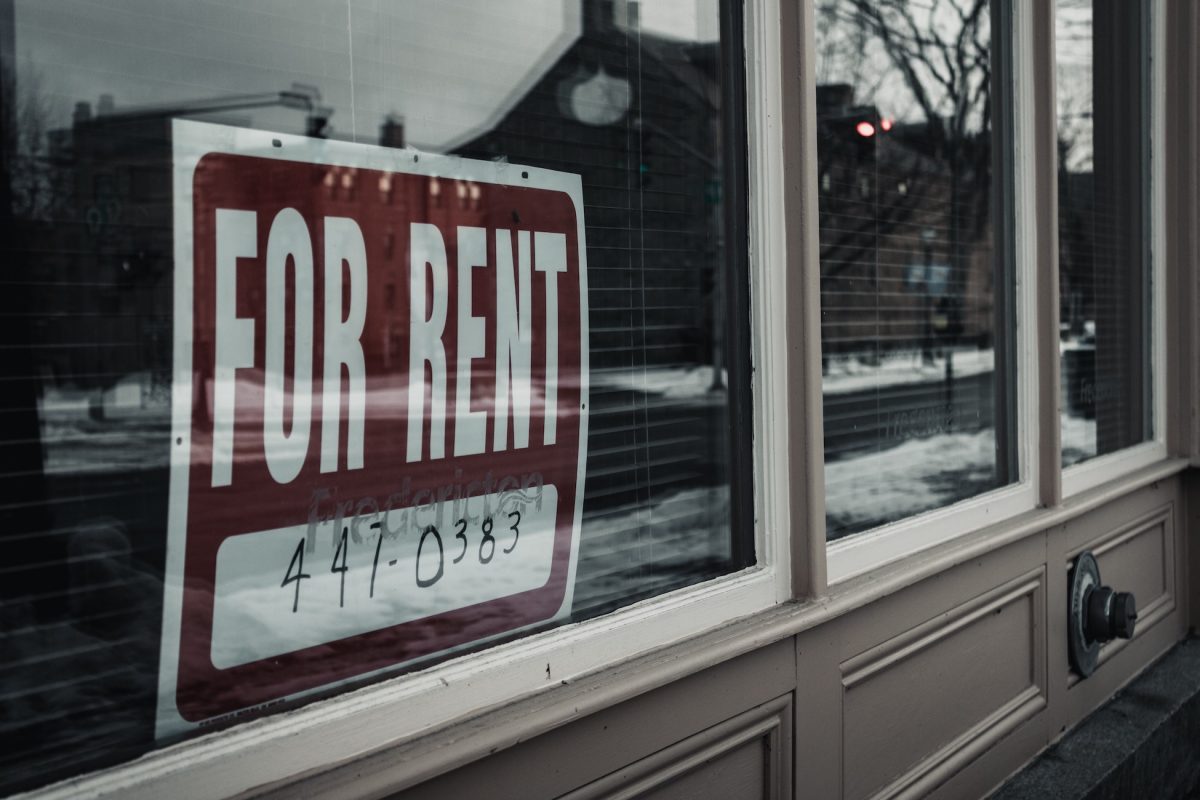Picture this: You're scrolling through your phone on a lazy Sunday afternoon, binge-watching your favorite series, when you suddenly stumble upon a revolutionary way to borrow money that isn’t bogged down by the endless red tape of traditional banks. Welcome to the realm of peer-to-peer (P2P) loans—a fun, flexible, and futuristic approach to borrowing and investing that’s tailor-made for the modern, digitally savvy millennial and Gen Z crowd. No more stuffy bank lobbies or soul-sucking interest rates that leave your wallet gasping for air. Here, your financial journey is as personal and dynamic as your playlist, with P2P lending offering an innovative solution that puts the power back in your hands.
What Is a Peer-to-Peer Loan Table of Contents
What Exactly Is a Peer-to-Peer Loan?
A Brief History of Peer-to-Peer Lending: From Garage Startups to Global Platforms
How Does Peer-to-Peer Lending Actually Work?
The Benefits of P2P Loans: Why Millennials and Gen Z Are Embracing This Financial Revolution
Understanding the Risks: Balancing Opportunity and Caution
Peer-to-Peer Loans vs. Traditional Bank Loans: What’s the Difference?
Ideal Candidates for P2P Loans: Are You a Good Fit?
How to Apply for a Peer-to-Peer Loan: Your Step-by-Step Guide
Peer-to-Peer Lending and Financial Wellness: A Modern Approach to Money Management
Embracing Innovation: The Technology Behind P2P Lending
Regulatory Landscape: Keeping the P2P Lending Market Safe and Fair
Your Toolkit for Success: Resources and Community Support – Your Next Steps
Investor Spotlight: Maximizing Returns with Peer-to-Peer Lending
Behind the Scenes: The Future of Peer-to-Peer Lending
Crafting Your Personal Financial Empowerment Plan Through P2P Loans
What Exactly Is a Peer-to-Peer Loan?
At its core, a peer-to-peer loan is a form of borrowing where individuals lend and borrow money directly from one another, bypassing traditional financial institutions like banks. Think of it as the Airbnb or Uber of the finance world—a platform that connects people in need of funds with investors looking to earn a return, all through a sleek online interface. Instead of waiting in line at a bank, P2P lending leverages technology to create a marketplace where borrowers can access funds with fewer middlemen and investors can diversify their portfolios with relatively higher returns.
Gone are the days when getting a loan meant endless paperwork, credit checks that felt like an interrogation, and a waiting period that could rival a snail’s pace. With P2P loans, the entire process is streamlined, transparent, and even, dare we say, kind of cool. Whether you’re looking to finance a new business venture, consolidate student loans, or cover an unexpected expense, P2P lending offers an accessible alternative that’s reshaping the financial landscape.
A Brief History of Peer-to-Peer Lending: From Garage Startups to Global Platforms
The concept of peer-to-peer lending might sound like a recent brainchild of the digital age, but its roots trace back to the simple idea of borrowing money from friends and family. Over time, innovators saw the potential in harnessing the power of the internet to connect borrowers with a wider pool of lenders beyond their immediate circle.
In the mid-2000s, as the internet began transforming every industry, a handful of pioneering companies launched platforms that allowed consumers to bypass traditional banks. These early adopters championed the benefits of transparency, lower costs, and a more democratized approach to finance. Fast forward to today and the P2P market has exploded, with platforms serving millions of users worldwide and handling billions in loans.
What started in a garage or two has morphed into a global movement—one that challenges centuries-old banking traditions by delivering faster, user-friendly, and community-driven financial solutions. It’s a testament to the saying that sometimes innovation comes from simply reimagining how things have always been done.
How Does Peer-to-Peer Lending Actually Work?
Let’s break it down in plain, relatable language. Peer-to-peer lending operates through online platforms that serve as digital marketplaces for loans. Here’s a step-by-step look at how it typically unfolds:
Step 1: Registration and Profile Setup
Whether you’re a borrower or an investor, your first stop is signing up on a P2P lending platform. This involves creating a profile, verifying your identity (yes, those digital KYC checks are a must), and setting your financial preferences. For borrowers, this might include your credit history and the purpose of the loan; for investors, it’s about risk tolerance and expected returns.
Step 2: Loan Application and Evaluation
Borrowers submit a detailed loan application. The platform then evaluates your creditworthiness using a variety of metrics—not just your credit score, but also factors like employment history, income, and sometimes even social media activity. This comprehensive approach allows platforms to offer customized loan terms that reflect your unique financial situation.
Once your application is approved, it’s uploaded to the marketplace where investors can review it. This is where the magic of community finance happens: investors browse through loan requests, evaluate risk profiles, and fund portions of loans based on their own financial strategy.
Step 3: Funding the Loan
Unlike a traditional bank loan—the whole amount is sourced from a single source—in P2P lending the loan is typically funded by multiple investors. This “fractional funding” spreads out risk and allows individuals to contribute as little or as much as they’re comfortable with. It’s like a crowdfunding campaign for your personal finances.
Step 4: Repayment and Returns
Borrowers repay the loan in fixed installments over a predetermined term, with interest. The repayments are then distributed proportionately to the investors who funded the loan, acting as passive income for them. It’s a win-win: borrowers get the money they need, and investors earn returns that often surpass traditional savings accounts.
The entire process is facilitated by robust technology, ensuring transparency, security, and efficiency at every step. With automated systems that manage disbursement and repayments, the need for manual intervention is minimized, making P2P lending both innovative and highly convenient.
The Benefits of P2P Loans: Why Millennials and Gen Z Are Embracing This Financial Revolution
If traditional banking was once the epitome of outdated finance, P2P lending is the shiny new app that’s capturing everyone’s attention. Here are some key benefits that make these loans particularly appealing to younger generations:
- Accessibility and Speed: Forget waiting weeks for bank approvals. P2P platforms offer a streamlined digital process that lets you apply and receive funds quickly—often within days.
- Lower Costs and Competitive Rates: By cutting out the middleman, these loans often come with lower fees and more competitive interest rates compared to traditional loans. This translates into significant savings over the life of your loan.
- Flexibility: Whether you’re funding a startup, covering educational expenses, or consolidating debt, P2P loans can be tailored to fit your unique financial needs. The online nature of the process also means you can manage your loan anytime, anywhere.
- Transparency: P2P platforms pride themselves on transparency. Detailed loan data, borrower profiles, and performance metrics are usually available, so you always know what you’re getting into—no hidden surprises.
- Diverse Investment Opportunities: For investors, P2P loans offer a way to diversify portfolios with fixed-income assets that can potentially yield higher returns than traditional bonds or savings accounts.
Beyond these tangible benefits, P2P lending resonates with the ethos of independence and empowerment—values that drive millennials and Gen Z. It’s about taking control of your finances in a way that feels modern, community-oriented, and downright revolutionary.
Understanding the Risks: Balancing Opportunity and Caution
While the advantages of P2P loans are plenty, it’s crucial to take a moment and address the potential risks involved. As with any financial product, understanding the pitfalls can help ensure that your experience is both rewarding and responsible.
Risk for Borrowers
Borrowers should be aware of the following risks:
- Credit Impact: Like any loan, failing to meet repayment obligations can negatively affect your credit score, making future borrowing more challenging.
- Fee Structures: Although P2P loans can offer lower rates, some platforms charge origination or processing fees that might add up. It's essential to read the fine print.
- Variable Interest Rates: Depending on the platform, some loans may come with variable interest rates that could increase over time, affecting your repayment amount.
- Platform Stability: Since many P2P lenders are relatively new and tech-driven, there’s a risk of platform instability or changes in regulatory environments that might impact your loan.
Risk for Investors
Investors, on the other hand, face a different set of challenges:
- Default Risk: The biggest risk in P2P investing is borrower default. Not all borrowers will be able to repay their loans, and while diversification helps, there’s no foolproof guarantee.
- Liquidity Concerns: Unlike stocks or bonds, P2P loans aren’t always easily convertible to cash. Some platforms offer secondary markets, but liquidity can still be limited.
- Economic Factors: Broader economic shifts, such as recessions or changes in interest rates, can affect repayment rates and investor returns.
- Market Volatility: Emerging industries and the rapid pace of fintech innovation mean that regulatory or market shifts could impact platform operations, which in turn affects investment security.
The key to responsibly navigating these risks is education. Understanding your risk tolerance, conducting thorough research on both the platform and its borrowers, and never investing more than you can afford to lose are critical steps in maintaining financial wellness in the P2P marketplace.
Peer-to-Peer Loans vs. Traditional Bank Loans: What’s the Difference?
If you’re still wondering whether P2P loans are too good to be true, it’s time to compare them head-to-head with traditional bank loans. Both options have their merits, but the differences are stark enough to warrant a deep dive.
Speed and Simplicity
Traditional bank loans are infamous for their lengthy, bureaucratic processes. From endless paperwork to multiple rounds of approval, it’s no surprise that many borrowers dread the prospect. On the other hand, P2P platforms are built for speed—applications are processed quickly, decisions are made fast, and money can often be in your account within a matter of days.
Cost and Flexibility
Banks typically operate with higher overhead, which translates into increased fees and less flexible repayment terms. P2P loans, by leveraging technology and removing the middleman, frequently offer lower costs and customizable terms that better align with your living situation and financial goals.
Access and Transparency
When it comes to access, P2P lending levels the playing field. Whether you’re a young entrepreneur looking to kickstart your startup or someone with a unique financial situation, P2P platforms often provide more personalized lending options. In addition, the transparency these platforms offer—detailed borrower profiles, clear fee structures, and community reviews—stands in sharp contrast to the opaque nature of traditional banks.
While traditional loans still have their place in the financial ecosystem, P2P lending represents a disruptive alternative that is pushing boundaries and rethinking the way we borrow and invest money.
Ideal Candidates for P2P Loans: Are You a Good Fit?
So, who stands to benefit the most from the P2P lending model? The answer is: a good chunk of us. Here’s how to see if you’re in the proverbial “sweet spot” for a peer-to-peer loan:
- Entrepreneurs and Small Business Owners: If you’ve got a killer startup idea or need funds to grow your business, P2P loans can provide the capital without the stringent requirements of traditional banks.
- Students and Young Professionals: Perhaps you're looking at funding further education, consolidating student debt, or even making a major purchase. P2P lending offers a more inclusive alternative that recognizes the unique financial challenges faced by younger generations.
- Credit Builders: For those with less-than-perfect credit scores, P2P loans often provide more flexible criteria than banks, enabling you to build credit while accessing necessary funds.
- Investors Looking for Diversification: On the flip side, if you’re someone with disposable income who wants to diversify your investments beyond stocks and bonds, P2P lending can be a lucrative avenue.
The bottom line is that whether you’re borrowing or investing, P2P lending is designed to be inclusive and adaptive, offering financial solutions that cater to a diverse audience.
How to Apply for a Peer-to-Peer Loan: Your Step-by-Step Guide
Ready to take the plunge into the world of P2P loans? Here’s a straightforward step-by-step guide that breaks down the process:
Step 1: Choose the Right Platform
Not all P2P platforms are created equal. Do some research—read reviews, check out interest rates, fee structures, and the types of loans available. Pick a platform that aligns well with your financial goals.
Step 2: Create Your Profile
Once you’ve picked a platform, it’s time to sign up. Enter your basic information, verify your identity (proof of ID, income details, etc.), and set up a secure account.
Step 3: Submit a Detailed Loan Application
Whether you’re borrowing for a new project or debt consolidation, prepare a thorough application. This typically includes your financial history, the purpose of the loan, and your desired loan terms. Honesty and detail here are your best friends—after all, more data means a better match with potential investors.
Step 4: Wait for Investor Interest
With your application live on the marketplace, investors will start reviewing your proposal. If you’re appealing enough (and with a little bit of beginner’s luck and solid credit credentials), the funding will start flowing in.
Step 5: Accept the Loan and Use Funds Wisely
Once fully funded, the funds are transferred to your account. From here, it’s essential to use the money wisely—after all, you’ll be repaying it with interest. Whether it’s investing in your business or consolidating high-interest debt, plan your next move like the financial ninja you are.
Step 6: Make Timely Repayments
Establish a repayment schedule according to your loan agreement. Most platforms offer useful digital tools that remind you of due dates and provide transparency in how your repayments are allocated among your investors.
By following these steps, you’re well on your way to tapping into the benefits of peer-to-peer lending, all while maintaining financial discipline and setting the stage for future success.
Peer-to-Peer Lending and Financial Wellness: A Modern Approach to Money Management
In an era where financial independence and wellness are at the forefront of every millennial or Gen Z’s mind, P2P lending offers a powerful, modern tool for managing money. This model isn’t just a means to an end—it’s a gateway to a more engaged and informed approach to personal finance.
Imagine being part of an interconnected network where your money works for you (or for others) in a system that values transparency, empowerment, and community. For the borrower, it’s about obtaining the funds you need with fewer hassles and more flexibility. For the investor, it’s about making your savings more active, generating returns that can potentially fund your next big adventure or simply bolster your emergency fund.
In today’s digital world, where every transaction can be tracked and managed from your smartphone, peer-to-peer lending fits naturally into a lifestyle that values efficiency and connectivity. It transcends the traditional boundaries of finance, seamlessly integrating into a holistic financial wellness plan that’s designed to empower you at every step.
Embracing Innovation: The Technology Behind P2P Lending
At the heart of every revolutionary financial model lies robust technological innovation. Peer-to-peer lending platforms harness advanced algorithms, secure payment gateways, and real-time data analytics to ensure that each transaction is smooth, secure, and efficient.
These digital platforms employ machine learning to assess creditworthiness more dynamically than traditional models. Instead of relying solely on static credit scores, they analyze a broader range of data points—from employment history to spending patterns—offering a more personalized view of your risk profile. This means borrowers can often secure better terms by showcasing their unique financial story, and investors can make more informed decisions with granular insights at their fingertips.
Moreover, blockchain and other advanced security protocols help ensure that every transaction is encrypted and tamper-proof. These state-of-the-art technologies reduce fraud risk and elevate the overall transparency of the system—qualities that are highly prized by tech-savvy millennials and Gen Z alike.
Regulatory Landscape: Keeping the P2P Lending Market Safe and Fair
With great innovation comes the need for great responsibility. As peer-to-peer lending platforms continue to gain traction, regulators are stepping in to ensure that these marketplaces operate fairly and transparently. Over the years, governments and financial agencies across the globe have introduced measures aimed at safeguarding both borrowers and investors.
Regulation in the P2P sector typically focuses on clear disclosure of interest rates and fees, stringent data security standards, and robust procedures for handling defaults. These measures ensure that while innovation flourishes, consumer protection is never compromised. For you, the modern borrower or investor, this means peace of mind knowing that there are safety nets in place to keep the ecosystem secure, stable, and fair.
Your Toolkit for Success: Resources and Community Support – Your Next Steps
Whether you’re dipping your toes into P2P lending for the first time or already a seasoned borrower/investor, having the right resources can make all the difference. Luckily, the internet is brimming with communities, expert blogs, podcasts, and interactive tools designed to help you navigate the P2P landscape with confidence.
Begin by exploring reputable P2P platforms and reading reviews from real users who share their personal experiences. Financial blogs and social media groups dedicated to fintech are treasure troves of tips, success stories, and cautionary tales that add layers of context to your decision-making process.
There are also numerous comparison tools available online that break down interest rates, fee structures, and borrower requirements, making it easier to choose the platform that best fits your unique needs.
Finally, consider engaging with online forums and local financial meetups. These communities provide invaluable peer support and advice, ensuring you’re never alone on your journey toward financial empowerment.
Investor Spotlight: Maximizing Returns with Peer-to-Peer Lending
For those looking to dip their toes into the world of alternative investments, peer-to-peer lending offers a unique opportunity to diversify your portfolio. Unlike the unpredictable roller coaster of stock markets, P2P lending provides a way to earn steady returns through fixed-income investments.
Investors can browse through a variety of loan listings, each with its own risk grade. By diversifying your investments across multiple loans, you can spread risk while tapping into a potentially higher yield than traditional savings accounts. There’s something inherently appealing about using your spare change to help someone else achieve their dreams, all while earning a respectable return.
With digital dashboards that allow you to monitor your investments in real time, you’re armed with all the data you need to make informed decisions. For the tech-savvy investor, this is not just a method of earning money—it’s an engaging way to be an active participant in the evolution of the financial ecosystem.
Real-World Success Stories
Nothing inspires confidence like real-life success stories. Across the globe, countless individuals have turned to peer-to-peer lending to transform their financial futures. Here are a few vivid examples:
Case Study 1: Launching a Startup Dream
Meet Alex, a creative entrepreneur with a groundbreaking idea for an eco-friendly fashion brand. Facing the traditional banks’ cold rejection and sky-high interest rates, Alex turned to a reputable P2P lending platform. Through a well-crafted loan application, he attracted multiple micro-investments from individuals who believed in his vision. With the funds secured, Alex launched his brand, and today, his startup is turning heads on the runway and in the media.
Case Study 2: Student Debt Consolidation with a Twist
Then there’s Jamie—a college graduate juggling multiple student loans and dreaming of financial freedom. Instead of succumbing to the pressures of exorbitant bank fees, Jamie opted for a peer-to-peer loan to consolidate her debt. The streamlined process and transparent terms allowed her to manage her repayments more effectively, ultimately freeing up cash flow for investments in her future.
Case Study 3: Retirement Income Boost
For investors like Maria, peer-to-peer lending is a powerful way to supplement retirement income. Looking for alternatives to the sluggish returns of traditional bonds, she diversified her portfolio by investing in various P2P loans. With the steady monthly repayments pouring in, Maria now enjoys an enhanced retirement lifestyle with extra funds for travel and leisure.
These stories are more than just numbers on a screen—they’re living proof that when technology meets community-driven finance, incredible transformations can happen.
Behind the Scenes: The Future of Peer-to-Peer Lending
As technology continues to advance and consumer preferences evolve, the P2P lending model is poised for an exciting future. Innovations in artificial intelligence, blockchain technology, and data analytics are set to further refine the risk-assessment process, making loans even more accessible and secure.
In the near future, we can expect more personalized loan products that use real-time data to fine-tune interest rates and repayment terms. Moreover, the integration of mobile-first applications and seamless digital payment systems will only amplify the convenience factor, making P2P lending an even more attractive option for tech-enthusiasts and digital natives.
As the global economy transforms, peer-to-peer lending will continue challenging the status quo, providing an alternative financial pathway that is flexible, transparent, and remarkably user-friendly.
Crafting Your Personal Financial Empowerment Plan Through P2P Loans
Your journey towards financial empowerment starts with informed decisions and proactive steps. If you’re considering a peer-to-peer loan, whether for personal growth, business ventures, or to boost your investment portfolio, create a plan that aligns with your long-term goals. Here’s how to structure your strategy:
Step 1: Self-Assessment
Evaluate your current financial situation realistically. Identify your credit strengths and weaknesses, understand your borrowing needs, and assess your capacity for repayment. This self-awareness is your blueprint for a successful loan application.
Step 2: Goal Setting
Define clear, achievable financial goals. Are you looking to expand your business, clear high-interest debt, or create a diversified investment portfolio? Your goals will directly influence the type of P2P loan that best suits your needs.
Step 3: Platform Research and Comparison
Don't settle on the first platform you encounter. Conduct thorough research, read user reviews, and compare fee structures and interest rates. Look for platforms that align with your values of transparency and efficiency.
Step 4: Develop a Repayment Strategy
Part of the empowerment in borrowing comes from having a clear, actionable repayment plan. Budget your monthly expenses, set aside a dedicated repayment fund, and use digital tools to track your progress.
Step 5: Leverage Community Resources
Join online forums, attend webinars, and participate in discussions about P2P lending. Learning from those who have walked the path before you can provide invaluable insights and help you avoid common pitfalls.
Armed with this personalized plan, you’re not just applying for a loan—you’re embarking on a financial journey that empowers you to take control, make informed decisions, and build a future where your money works as hard as you do.
Peer-to-Peer Loans FAQ: Your Burning Questions Answered
We know you’ve got a few questions buzzing in your mind about peer-to-peer loans. Here are some frequently asked questions to clear the air:
1. What is a peer-to-peer loan?
It’s a type of loan where individuals borrow money directly from other individuals through an online platform, bypassing traditional banks.
2. How is a P2P loan different from a bank loan?
While bank loans often come with lengthy approval processes and high fees, P2P loans are processed quickly online with more transparent terms and competitive rates.
3. Who can apply for a P2P loan?
P2P loans are designed for a wide range of borrowers—from young entrepreneurs and students to individuals looking to consolidate debt or cover personal expenses.
4. What are the benefits of P2P lending for investors?
Investors can diversify their portfolios, potentially earn higher returns than traditional savings accounts, and directly contribute to someone else’s financial growth.
5. What risks should I be aware of?
The primary risks include borrower default, platform instability, and liquidity issues. It’s important to diversify investments and conduct thorough research before proceeding.
6. How do I assess if a P2P loan is right for me?
Consider your credit situation, borrowing needs, and financial goals. It often helps to consult financial experts and do a cost-benefit analysis before committing.
7. Are there fees associated with P2P loans?
Yes, many platforms charge origination or processing fees. It’s essential to review the fee structure carefully to understand the overall cost.
8. How does the repayment process work?
Borrowers repay the loan in fixed monthly installments over a predetermined period, and these repayments—including interest—are distributed to the investors who funded the loan.
9. What role does technology play in P2P lending?
Technology is the backbone of P2P lending, enabling online applications, risk assessment using data analytics, secure digital transactions, and real-time tracking of loan performance.
10. How can I ensure I’m making a well-informed decision?
Educate yourself using reputable sources, compare multiple platforms, and seek advice from financial experts or community forums dedicated to fintech and P2P lending.
Your Journey to Financial Freedom with Peer-to-Peer Loans
Embarking on a peer-to-peer lending journey is more than just securing a loan or making an investment—it’s a step towards reshaping your financial future. It’s about harnessing modern technology to take control over your money, using accessible and transparent systems that empower you with the knowledge and tools to succeed.
For borrowers, every timely repayment becomes a building block for a stronger credit profile, opening doors to even more financial opportunities down the road. For investors, each successful loan adds a layer of diversification to your portfolio, proving that informed, community-driven finance can yield both monetary rewards and peace of mind.
Whether you’re launching a startup, consolidating debt, or exploring innovative investment opportunities, peer-to-peer loans offer a flexible, engaging, and genuinely modern approach to managing money. As you join this rapidly evolving community, remember that financial freedom is a journey of continual learning, adaptation, and empowerment.
So, what are you waiting for? Dive into the world of P2P lending, do your homework, and start building your financial legacy. In a world where banks are no longer the only game in town, your financial destiny is truly in your hands.













